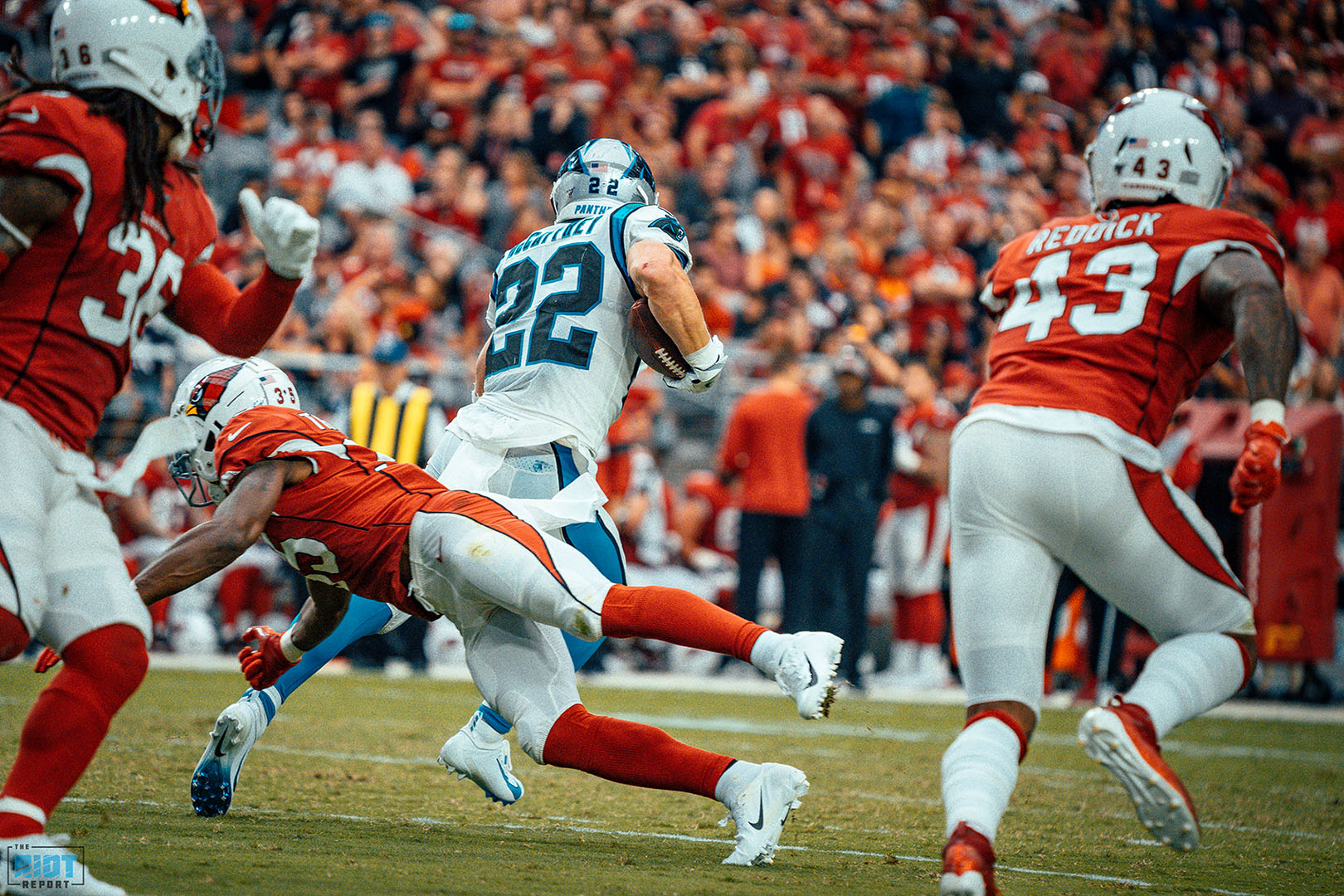Touchdowns of over seventy yards are not completely unheard of in the NFL – but what is very, very rare is to see a running back take an inside rush straight up the gut for a score from over 75 yards out.
The runs of this length which do exist in the NFL usually involve either a running back finding some wide open cutback lane or a misjudged angle by a safety looking to cut the running back off at the edge. However, on Sunday, the Panthers ran Christian McCaffrey up the middle for the longest touchdown run in franchise history without either of those things happening – so how did they do it?
Location, Location, Location
First, let’s start by looking at the offensive and defensive formation immediately before the snap:

Excluding the quarterback and the running back, the Panthers have eight blockers in the box and the Cardinals have nine defenders in that same area with one safety deep at the bottom of the image. Both the Panthers and the Cardinals have one player each just off the right of the screen who, for now, can be assumed to negate each other. Typically, in such situations, should teams look to run the ball, they either do so by trying to isolate an individual defender on the backside of the play or by bringing the quarterback into the play as a running threat. Here, the Panthers go for the former.
So let’s look at what it appears the play design was:

There are four things which are going on in this play that are worth noting. The first is that the Panthers’ offensive line minus Greg Van Roten are all crashing to the right of the screen, although Greg Little initially pins the 3-tech before kicking out to seal the edge. What this means is the Panthers are looking to drive the Cardinals’ three down linemen and the right edge defender across the play in order to create more space on the strong side. The advantage of blocking in this way is the focus is not on getting push but on blocking directionally, which is able what makes a normally highly difficult reach block by Trai Turner on the NT feasible.
The second and third things to note can be grouped together somewhat, as they are the inside and outside sealing blocks by Chris Manhertz and Alex Armah respectively. Armah’s job is to force the left edge defender wide and to prevent him from compacting the play laterally. Conversely, Manhertz’s job is to create the inside sealing block on the right inside linebacker, with the isolated defender being #32, safety Budda Baker. Finally, Van Roten and Greg Olsen are then expected to pull through the gap created between the crashing offensive linemen and Armah’s sealing block.
This can be seen coming together midway through the play:

Here, you can see the crash blocks working, with Moton and Turner in particular allowing penetration but at the cost of being driven wide of the run. The weakside edge defender is left temporarily out of the play, but even if he dives on the run, Little likely has space to drive him wide after initially helping onto the 3-tech. You can also see how Armah is looking to seal the edge to create a big inside gap that is big enough for both of the pulling defenders to fit through. Finally, you can see Manhertz working across to seal the backside of the play.
What can also be seen is the first thing that could be described as a mistake by the Cardinals, rather than the Panthers being in complete control. Both Haason Reddick (43) and Baker (32) could have made things a lot harder for the Panthers by this point. Both players should be reacting to the pulling blockers by shifting across to the strong side of the play, and while Manhertz would likely still be able to trap Reddick, Baker might have had a chance at this point to at least have limited the damage the Panthers were able to make.
However, from this point on, the Cardinals will only get worse.
Up Next: The McCaffrey Factor



